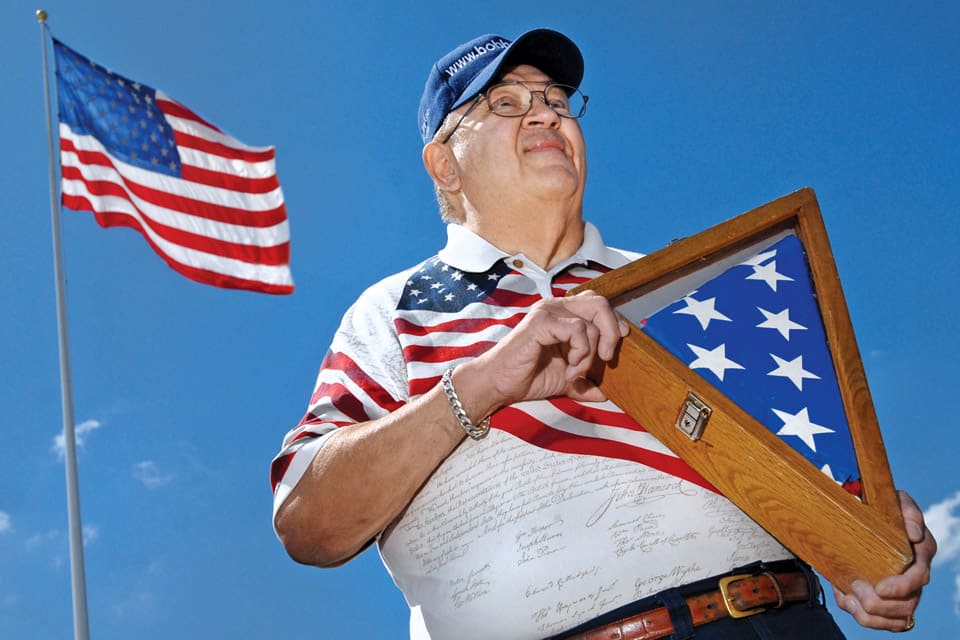June 14, 2020
By: Staff Report
Robert G. Heft designed the fifty-star United States flag at the age of 17.
Stanley Pratt, Heft’s teacher at Lancaster High School in Ohio, asked his students to design a flag for the admittance of Hawaii and Alaska as states in the United States. Heft chose to arrange the fifty white stars on a blue background in alternating horizontal rows. Five rows had six stars, and four rows had five stars. Seven alternating horizontal red and six white stripes completed the flag, representing the original thirteen colonies.
The flag’s three colors, red, white, and blue, represent respectively courage, purity, and justice. It took Heft 12.5 hours to sew the flag together.

Stanley Pratt gave Heft a B- as the grade for the flag. Pratt supposedly stated that Heft’s design lacked originality, but the teacher did offer to raise the grade if Heft could get the flag accepted as the United States’ national flag. Heft sent his flag to Walter Moeller, his Ohio Congressman. Moeller succeeded in having Heft’s design adopted as the new United States flag on July 4, 1960.
Heft’s original flag has flown over the White House, every state capital building, and eighty-eight United States embassies. It remains in Heft’s possession, although numerous people and museums have offered to purchase the flag, including one offer of $350,000. Heft’s design was the twenty-seventh official flag of the United States.
Heft was born in Saginaw, Michigan, but he spent his youth in Ohio. He returned to Saginaw after retiring from Northwest State Community College in Archbold, Ohio, where he was a professor. He also served as mayor of Napoleon, Ohio, for 20 years. In Saginaw, he was employed as the Education Manager of the Saginaw County Junior Achievement. Heft traveled across the country, giving speeches regarding the United States flag and his role in its design. Heft also developed a fifty-one star flag in case a new state joins the United States.
Heft died on December 12, 2009, in Saginaw, Michigan, of natural causes.
Courtesy of ohiohistorycentral.org
